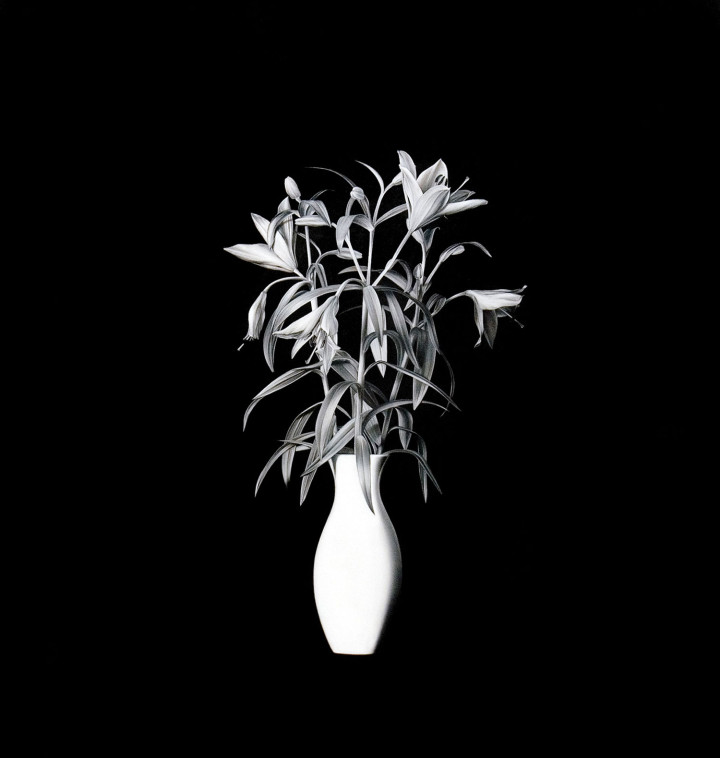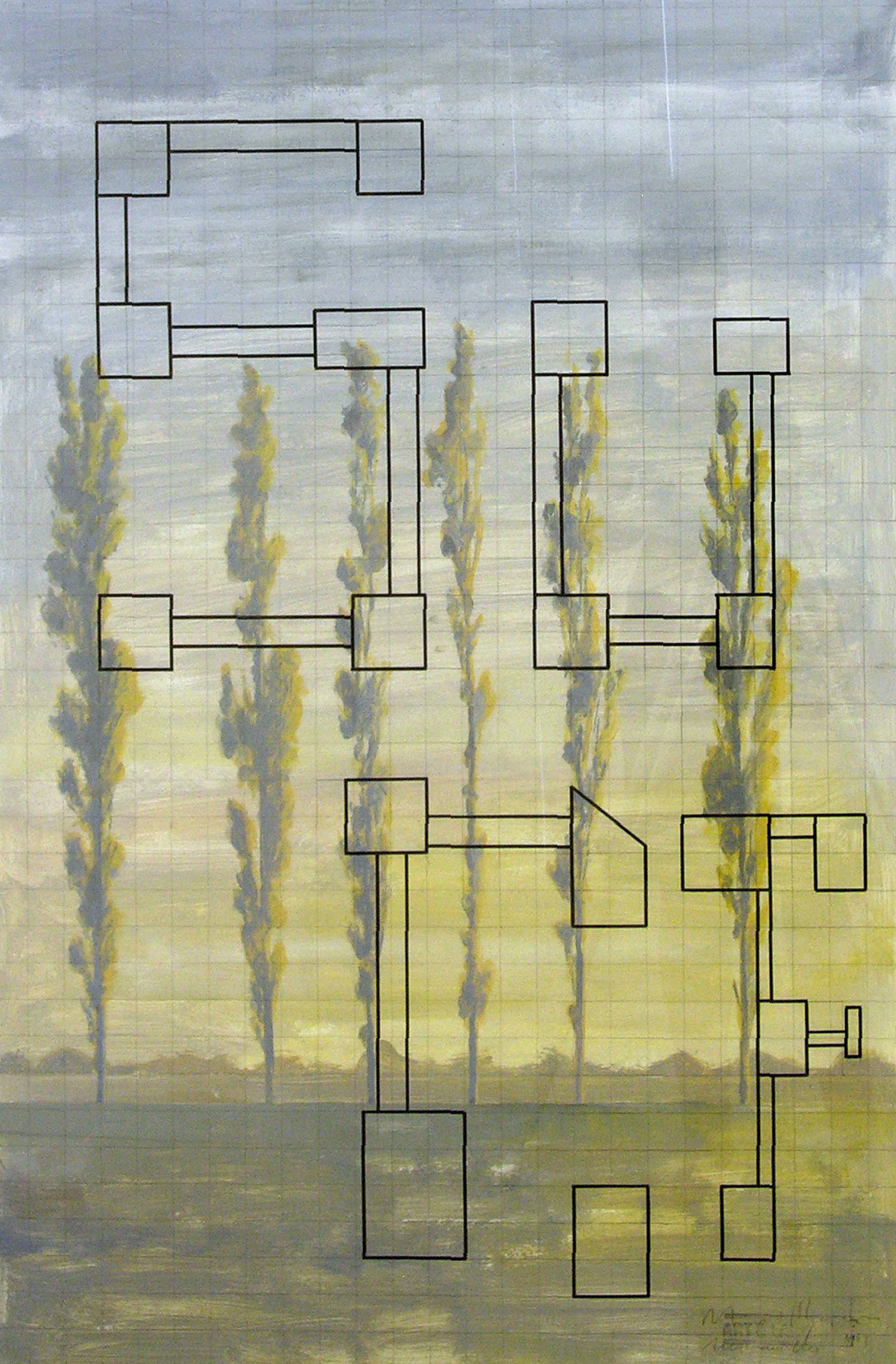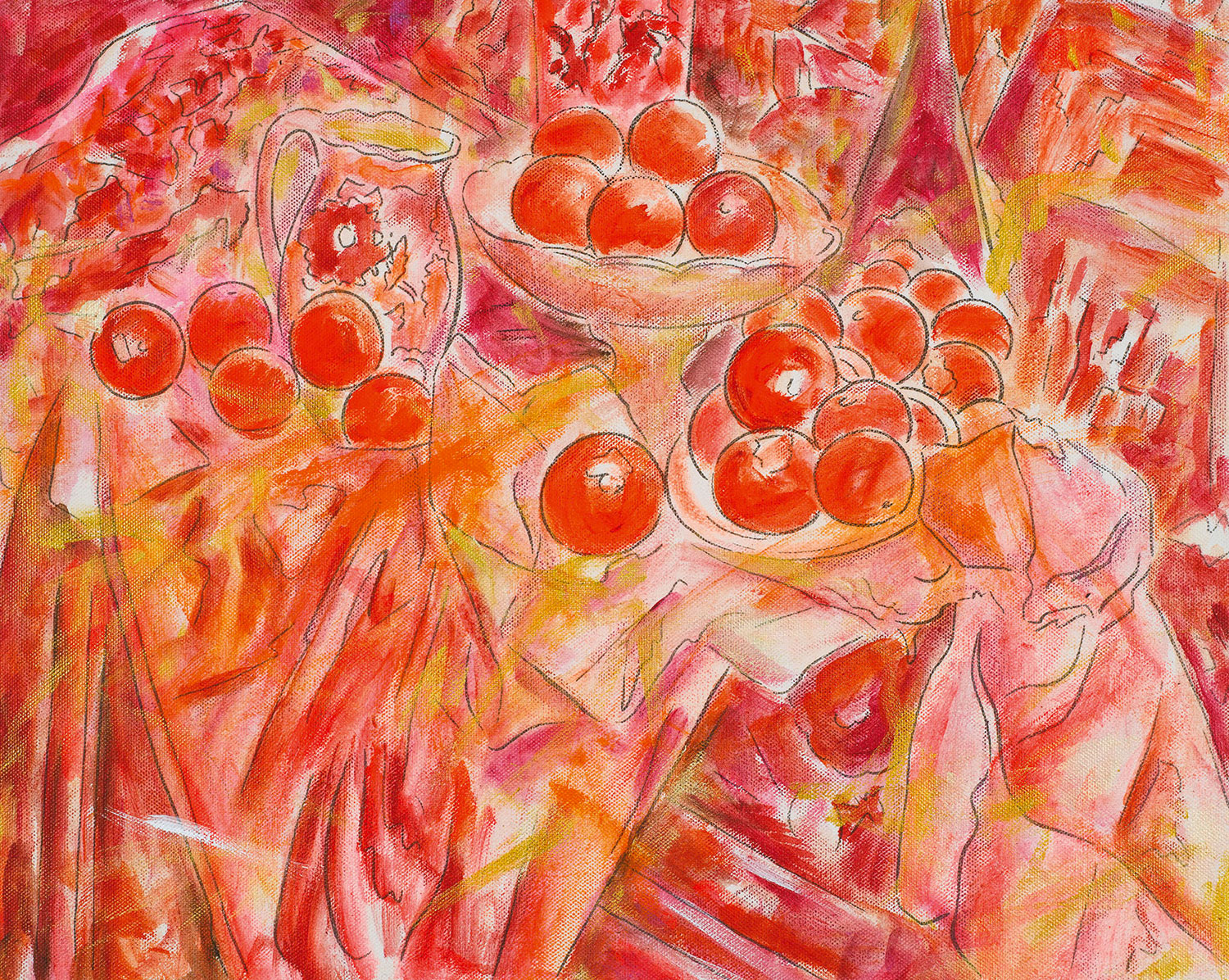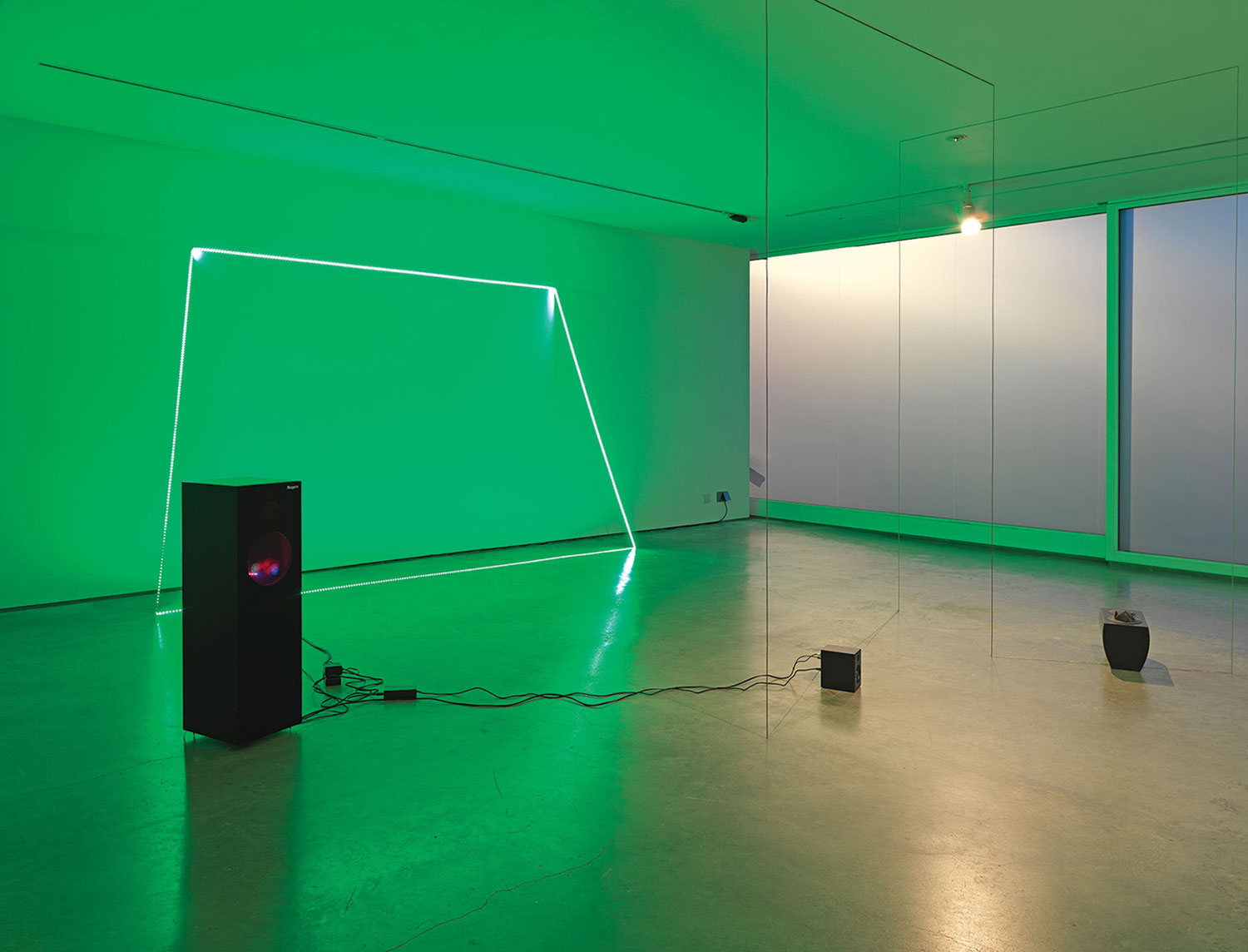
Christoph Doswald: Let’s begin with the simple things. Why do you paint without color?
Drago Persic: Monochrome fascinates me. Blackness and depth are unknowable and incomprehensible. To deal with black pigments is uniquely difficult. But by all means I make paintings in color, just not as often. At the same time this minimal palette simplifies things for me, so I can just focus on shadows, on the search for form.
CD: What role do photographic or filmic references play in your work?
DP: Quite a large, unconscious role, which I only perceive once the paintings are finished. The work of Henri Alekan or Karl Blossfeldt is also very important to me, as is the Danish painter Vilhelm Hamershøi.
CD: Blossfeldt? How do you explain that?
DP: I’m thinking about freestanding objects surrounded by uncertain, abstract and monochrome surfaces. Similarly, I try to isolate objects so that they are no longer recognizable as more than snippets from actual life.
CD: Hints and fragments have something threatening or looming in connection to the dark color palette, and create an open field of associations for the viewer…
DP: In my last exhibition I made a panorama with sequenced images, a constellation of falling clothes. My association was very romantic, like a starry sky, and it was an attempt to capture something in motion with an unintentional blink of the eye. So I peripherally thought about cascading or staggered people, isolated against the monochrome blue sky. The association and focus for everyone lays in that which is threatening. I almost always use an artificial light source to illuminate the objects, and the resulting conspicuous shadows are reminiscent of film noir or bleak moods.
CD: Do you paint from models and actual references or does everything come from the mental images stored in your head?
DP: I usually begin with sketches and mockups. With every possibility I use real models though.
CD: Are they your own or found — and what are they of?
DP: I worked a lot with found footage but now I produce more, like arranging a still life and recording it with a camera, or sketching it.

CD: Reality is produced theatrically, then photographed and finally transformed into painting. What is the meaning of this form of dual-reflected reality?
DP: The photographic illustration of scenery is only one idea, a task. More full of meaning is the moment when I’m actually painting.
CD: How would you describe this moment?
DP: Perhaps as a moment of contradictions, a search for authenticity. Also not assessable or difficult, like the way painting black doesn’t always function. With transformation divergent systems emerge, which in the moment of painting I strengthen or weaken. The uncertain surfaces, those which the objects negotiate, do not truly correspond with reflections; reflections are replaced and so on…
CD: I would like to know more about the black pigments…
DP: As a colorless color blackness can only be attributed to its grade of absorption. With the lightening of white pigments different warm and cool gray nuances occur. From violet to brown color tones. There are always surprises…





